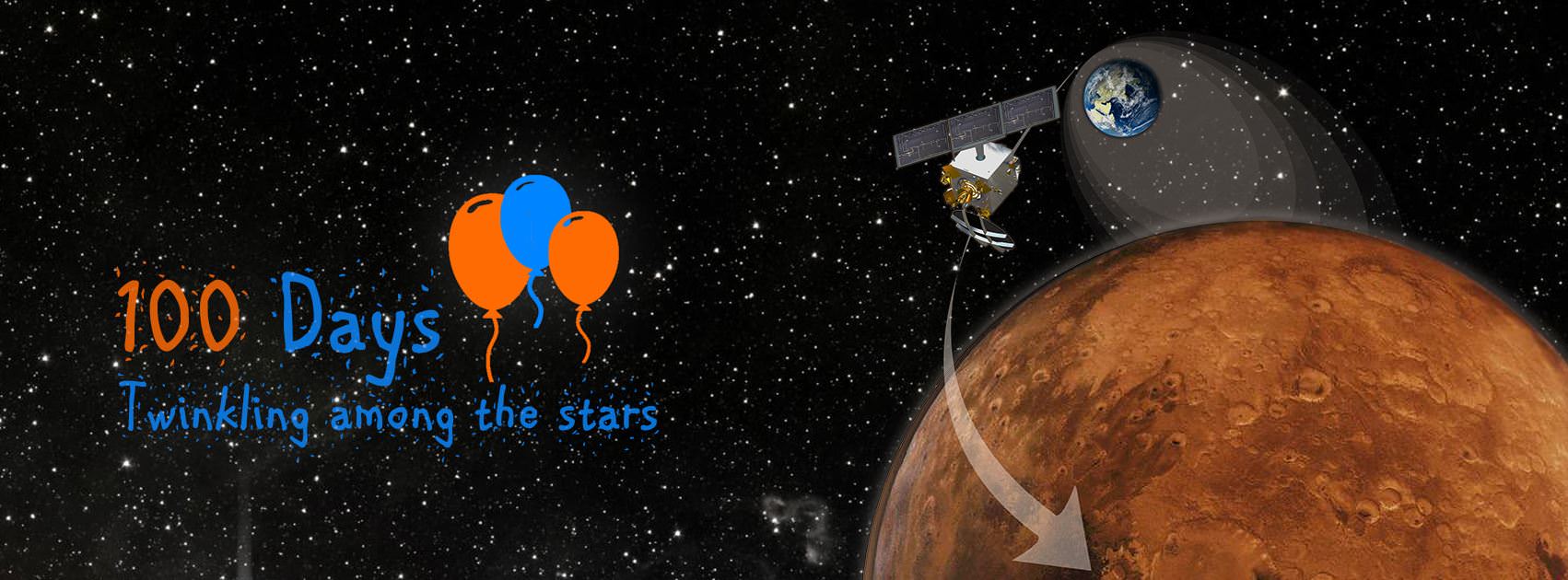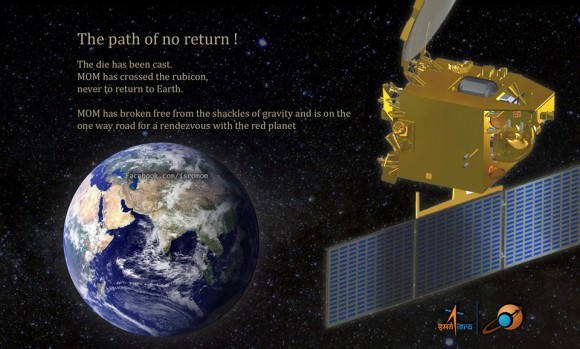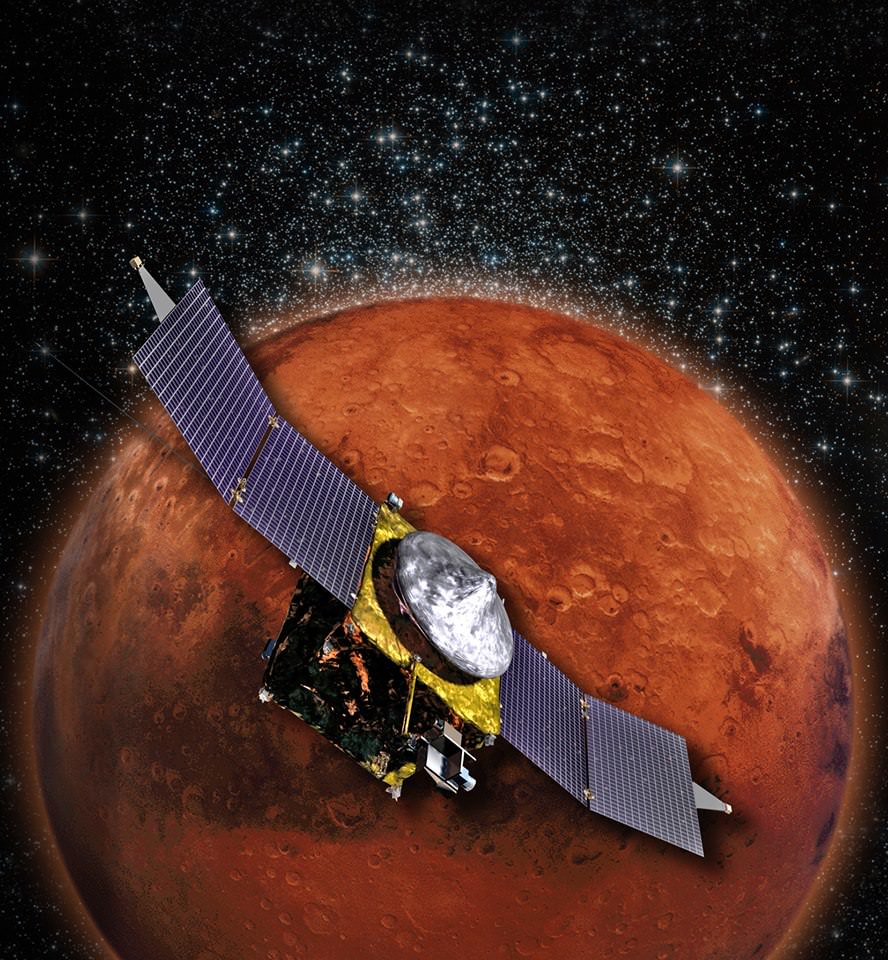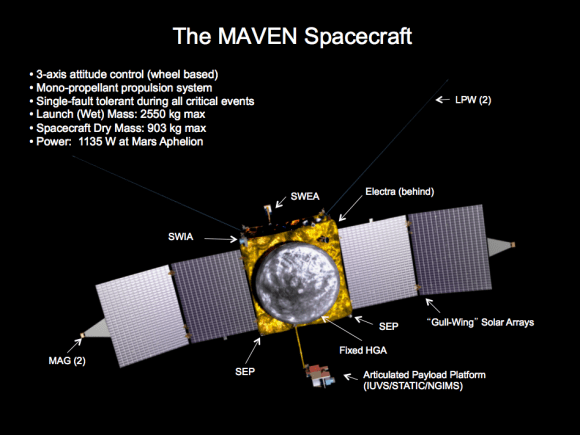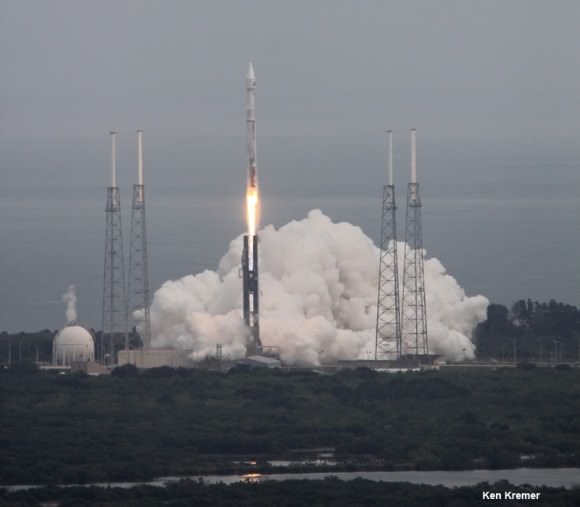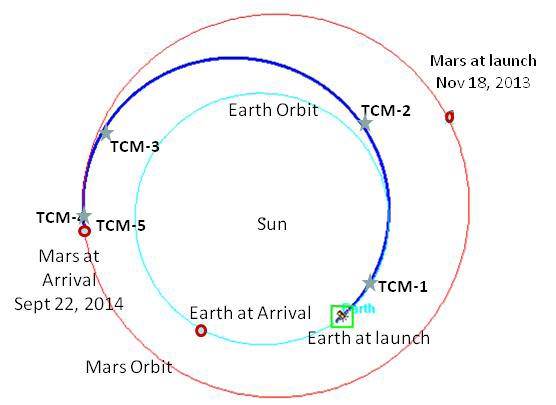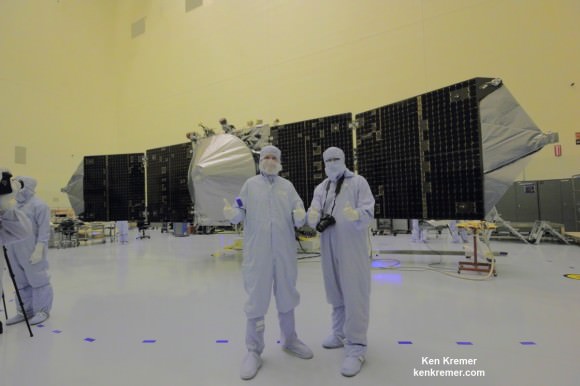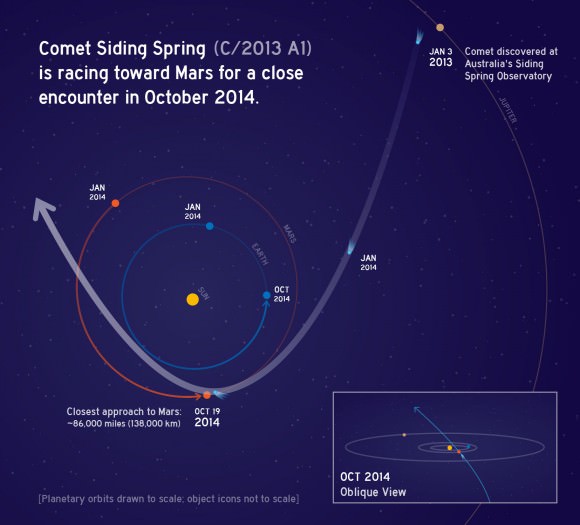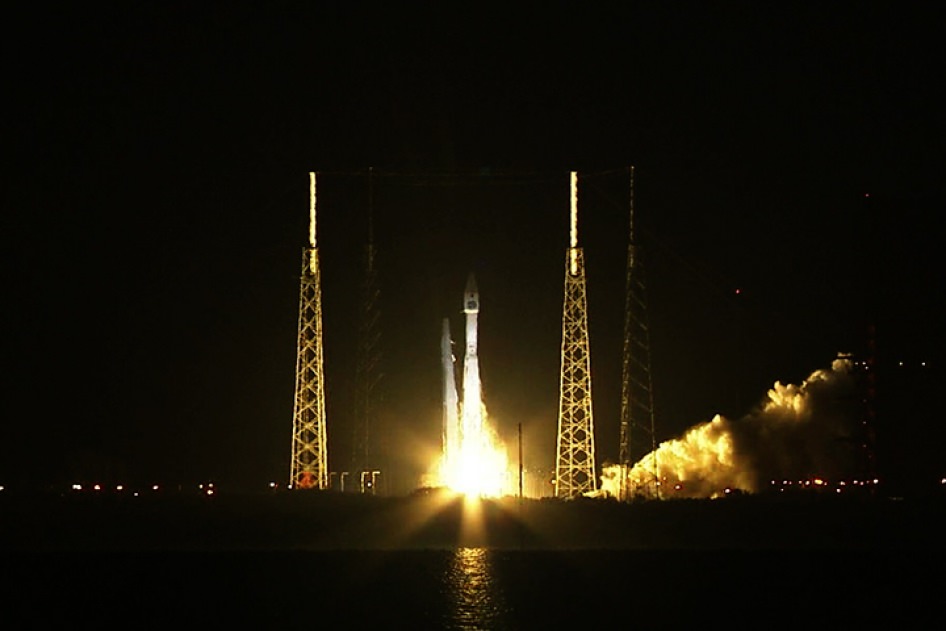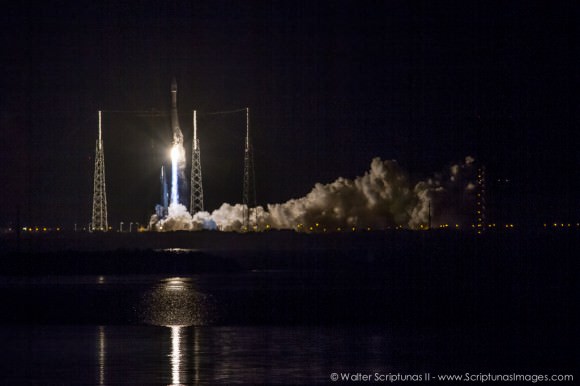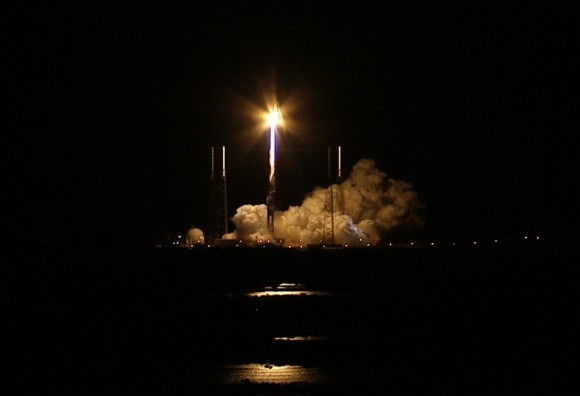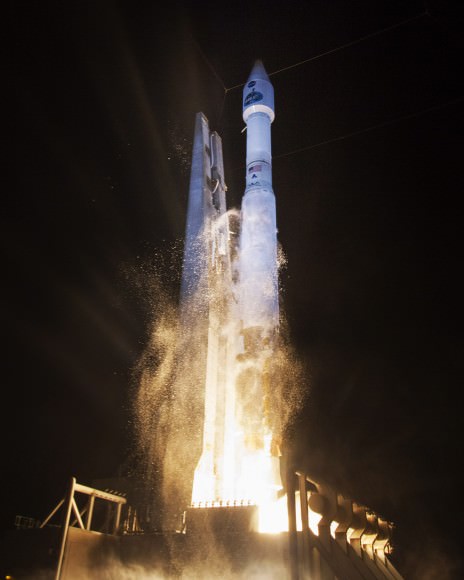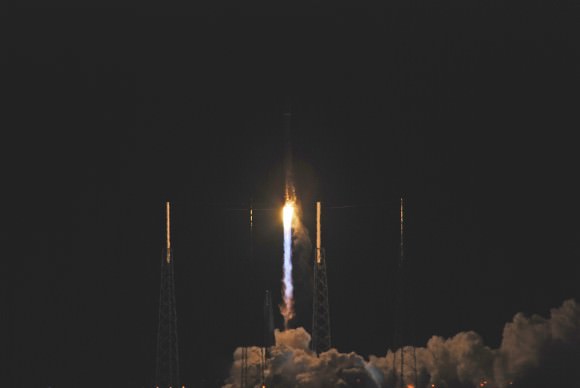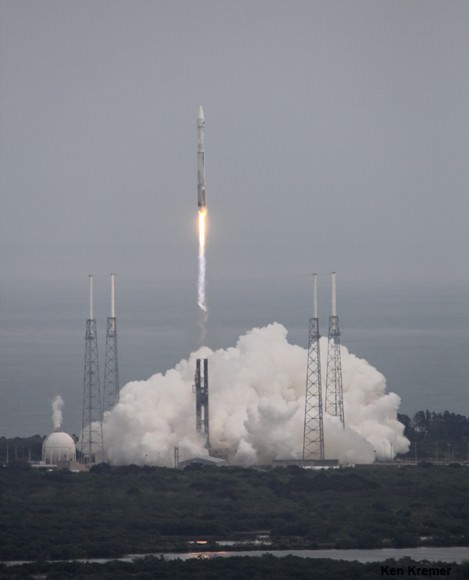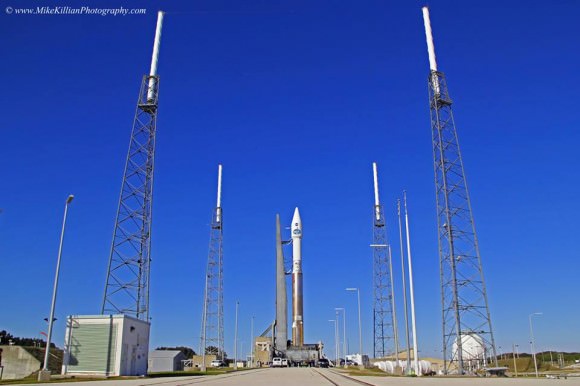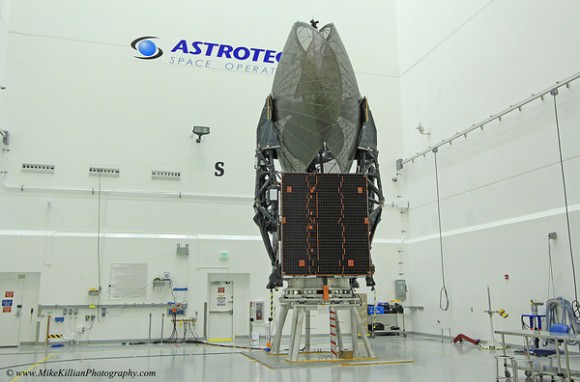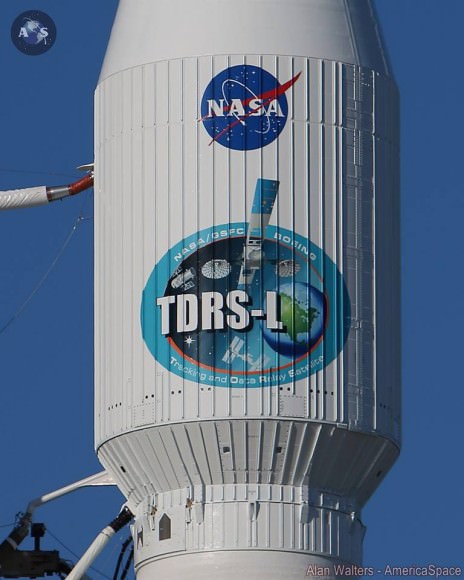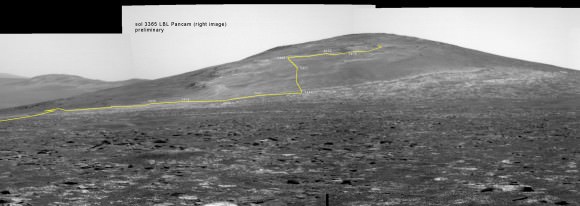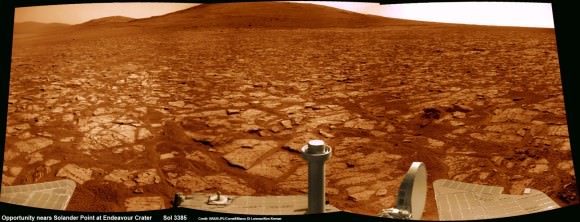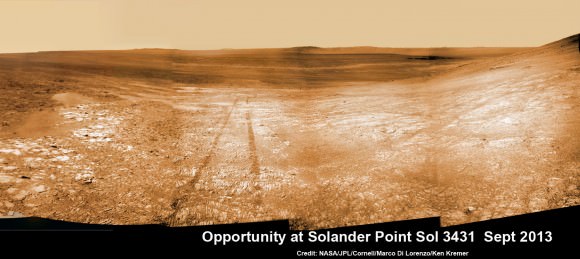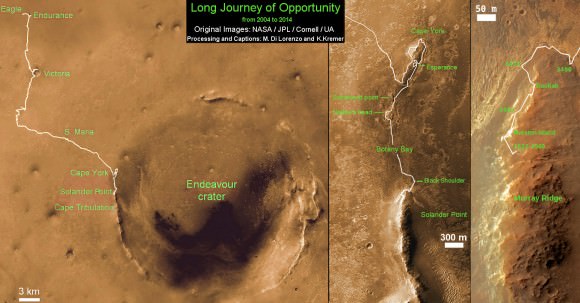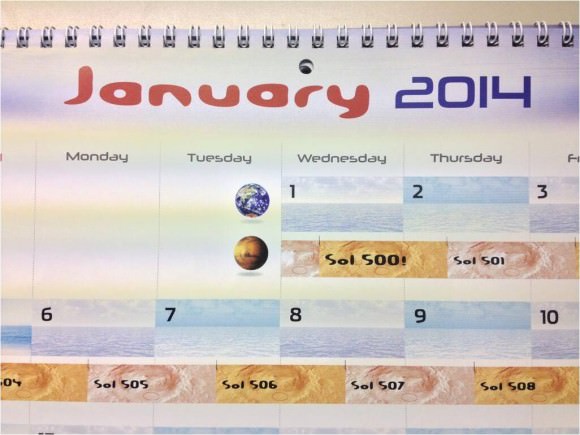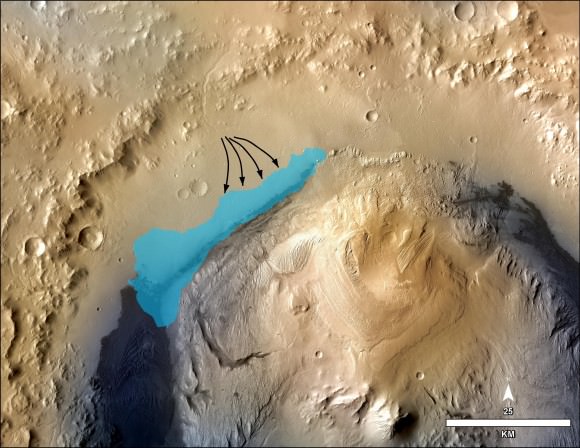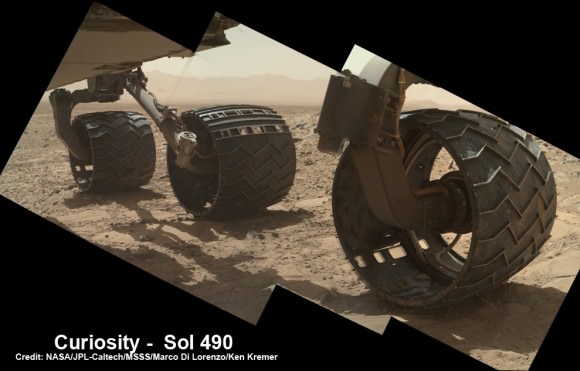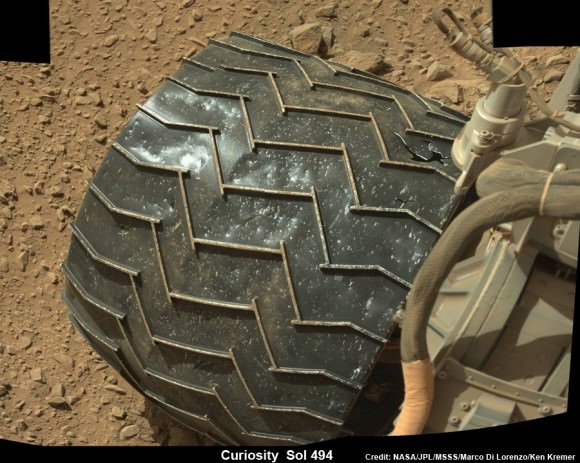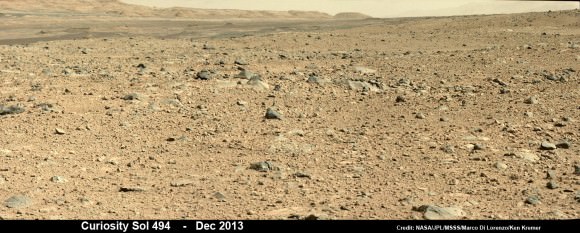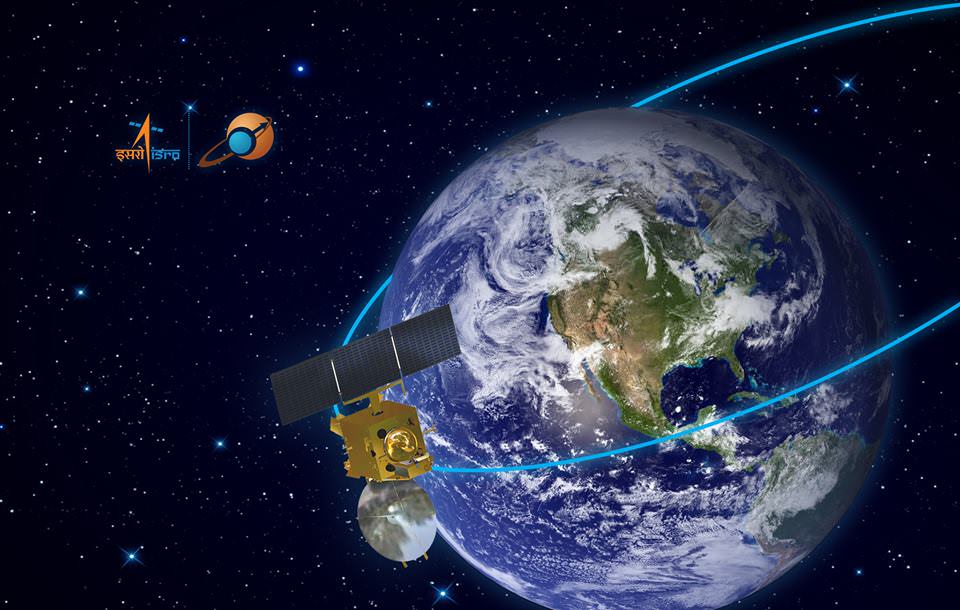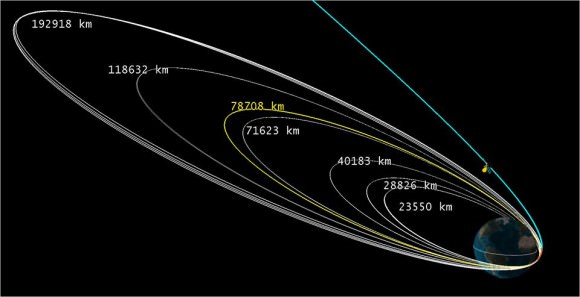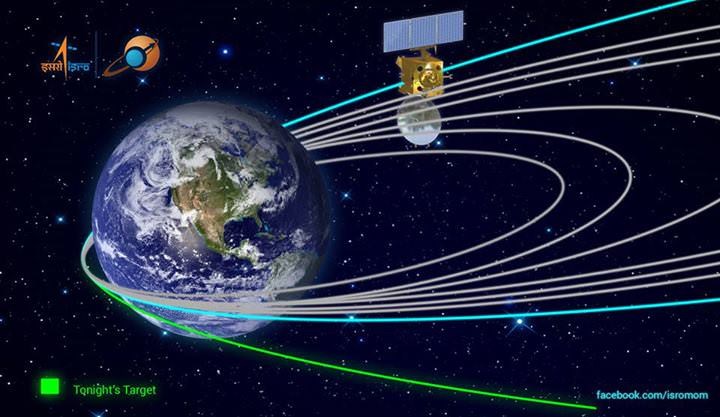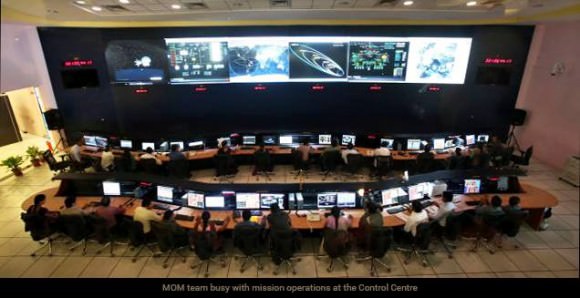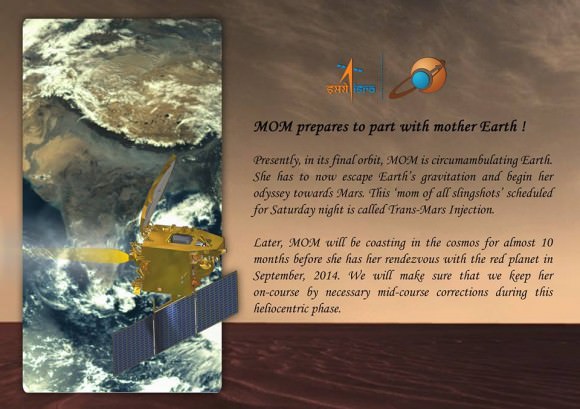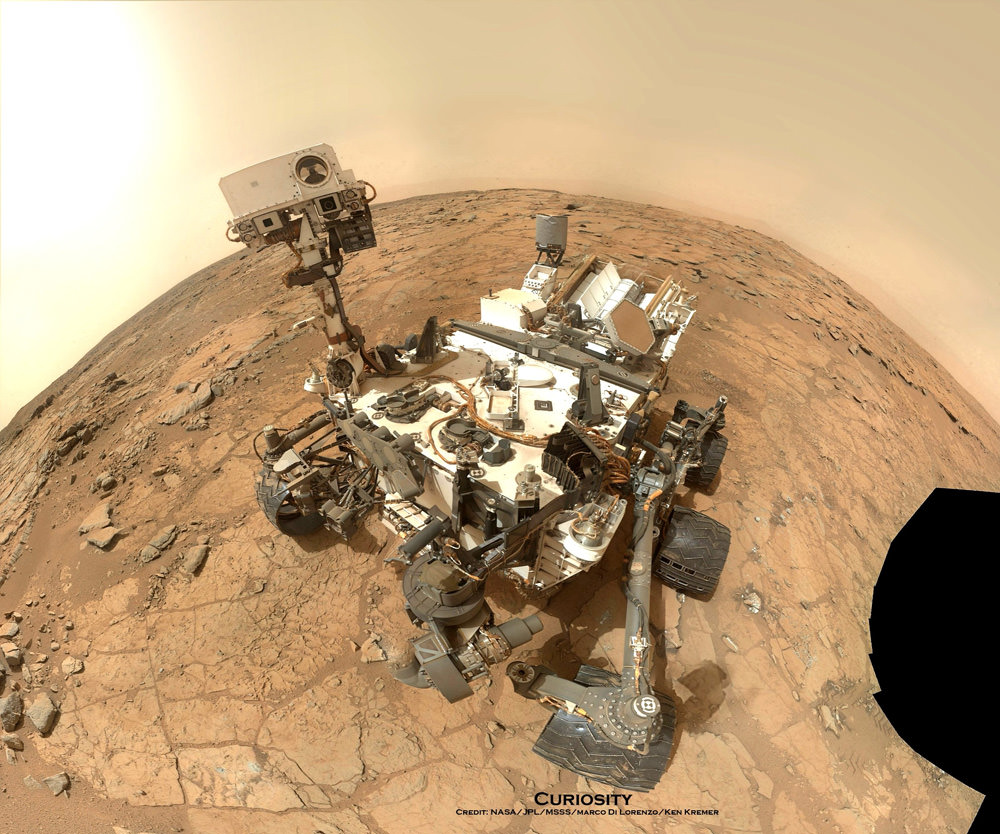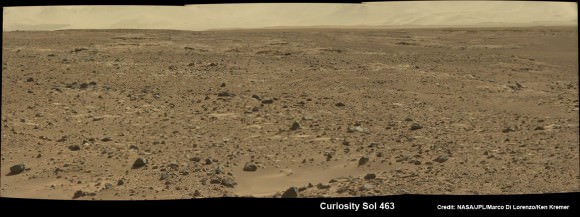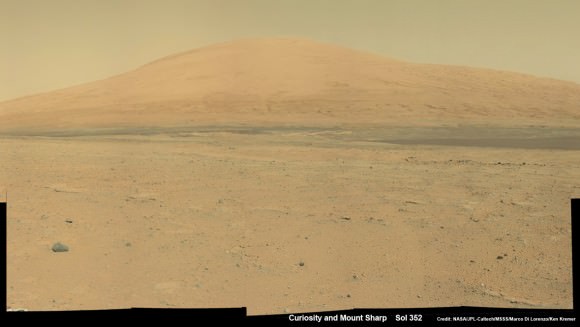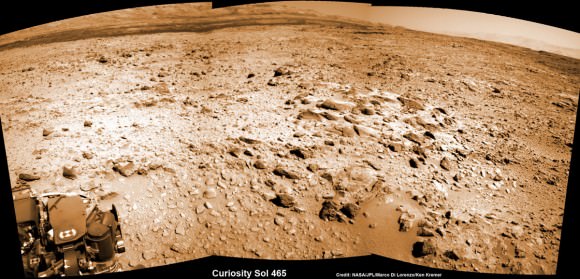India’s maiden Mars explorer, the Mars Orbiter Mission or MOM, celebrated 100 days speeding through space this past week, racing outwards on its historic journey to the Red Planet.
After streaking through space for some ten and a half months, the 1,350 kilogram (2,980 pound) MOM probe will rendezvous with the Red Planet on September 24, 2014 – where she will study the atmosphere and sniff for signals of methane.
Feb. 12, 2014 marked ‘100 Days of MOM’ since the picture perfect blast off on Nov. 5, 2013 from India’s spaceport at the Satish Dhawan Space Centre, Sriharikota, atop the nations indigenous Polar Satellite Launch Vehicle (PSLV) which placed the probe into its initial Earth parking orbit.

A series of six subsequent orbit raising maneuvers ultimately culminated with the liquid fueled main engine firing on Dec. 1, 2013 for the Trans Mars Injection(TMI) maneuver that successfully placed MOM on a heliocentric elliptical trajectory to the Red Planet.
The TMI, affectionately dubbed ‘The mother of all slingshots’ finally provided the craft with sufficient thrust to achieve escape velocity and blast free of the Earth’s sphere of influence forever and begin her nearly yearlong momentous voyage to Mars.
The first of four in flight Trajectory Correction Maneuvers, TCM-1, was conducted by firing the 22 Newton Thrusters for a duration of 40.5 seconds on December 11, 2013. A trio of additional TCM firings are planned around April 2014, August 2014 and September 2014.
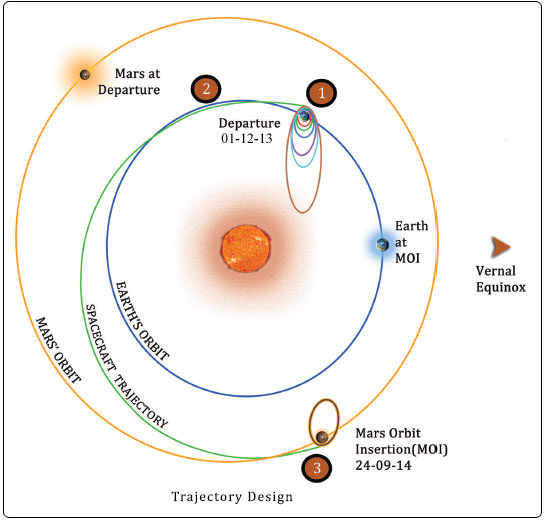
MOM was designed and developed by the Indian Space Research Organization’s (ISRO) at a cost of $69 Million and marks India’s inaugural foray into interplanetary flight.
During the first 100 days, the probe has traveled about 190 million kilometers and has a little less than 500 million kilometers and 205 days to go during her journey of some 680 million kilometers (400 million miles) overall.
A health check on February 6, 2014 confirmed that the 15 kg (33 lb) science payload comprising five Indian built instruments was turned “ON” and is operating well.
MOM is currently some 16 million km distant from Earth and one way radio signals take approximately 55 seconds.
“The round trip time is almost 2 minutes for a communication signal to go to MOM and come back, about the same time mom takes to make noodles!” ISRO noted humorously in a Facebook mission posting.
“Keep going MOM!”
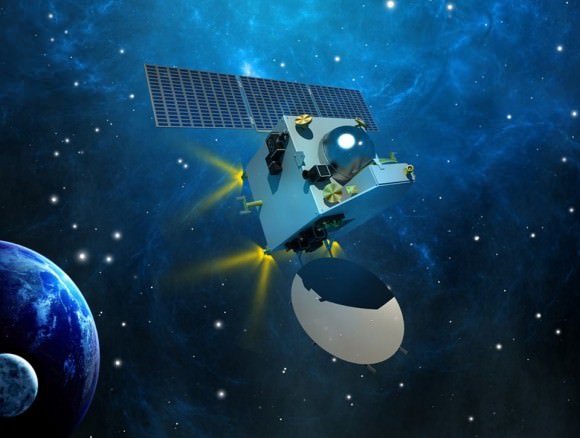
Following the ten month cruise through space the orbital insertion engine will fire for the do or die burn on September 24, 2014 placing MOM into an 377 km x 80,000 km elliptical orbit around Mars.
MOM is not alone in the frigid vacuum of space. She is joined by NASA’s MAVEN orbiter in pursuit of Mars.
MOM will reach Mars vicinity just two days after the arrival MAVEN on Sept. 22, 2014.
To date MAVEN has flown over 137 million miles (221 million km) of its total 442 million miles (712 million km) path to Mars.
If all continues to goes well, India will join an elite club of only four who have launched probes that successfully investigated the Red Planet from orbit or the surface – following the Soviet Union, the United States and the European Space Agency (ESA).
Both MAVEN and MOM’s goal is to study the Martian atmosphere, unlock the mysteries of its current atmosphere and determine how, why and when the atmosphere and liquid water was lost – and how this transformed Mars climate into its cold, desiccated state of today.
Together, MOM and MAVEN will fortify Earth’s invasion fleet at Mars. They join 3 current orbiters from NASA and ESA as well as NASA’s pair of sister surface rovers – Curiosity and Opportunity.
Although they were developed independently and have different suites of scientific instruments, the MAVEN and MOM science teams will “work together” to unlock the secrets of Mars atmosphere and climate history, MAVEN’s top scientist told Universe Today.
“We have had some discussions with their science team, and there are some overlapping objectives,” Bruce Jakosky told me. Jakosky is MAVEN’s principal Investigator from the University of Colorado at Boulder.
“At the point where we [MAVEN and MOM] are both in orbit collecting data we do plan to collaborate and work together with the data jointly,” Jakosky said.
Stay tuned here for Ken’s continuing MOM, Opportunity, Curiosity, Chang’e-3, LADEE, MAVEN, Mars rover and more planetary and human spaceflight news.

